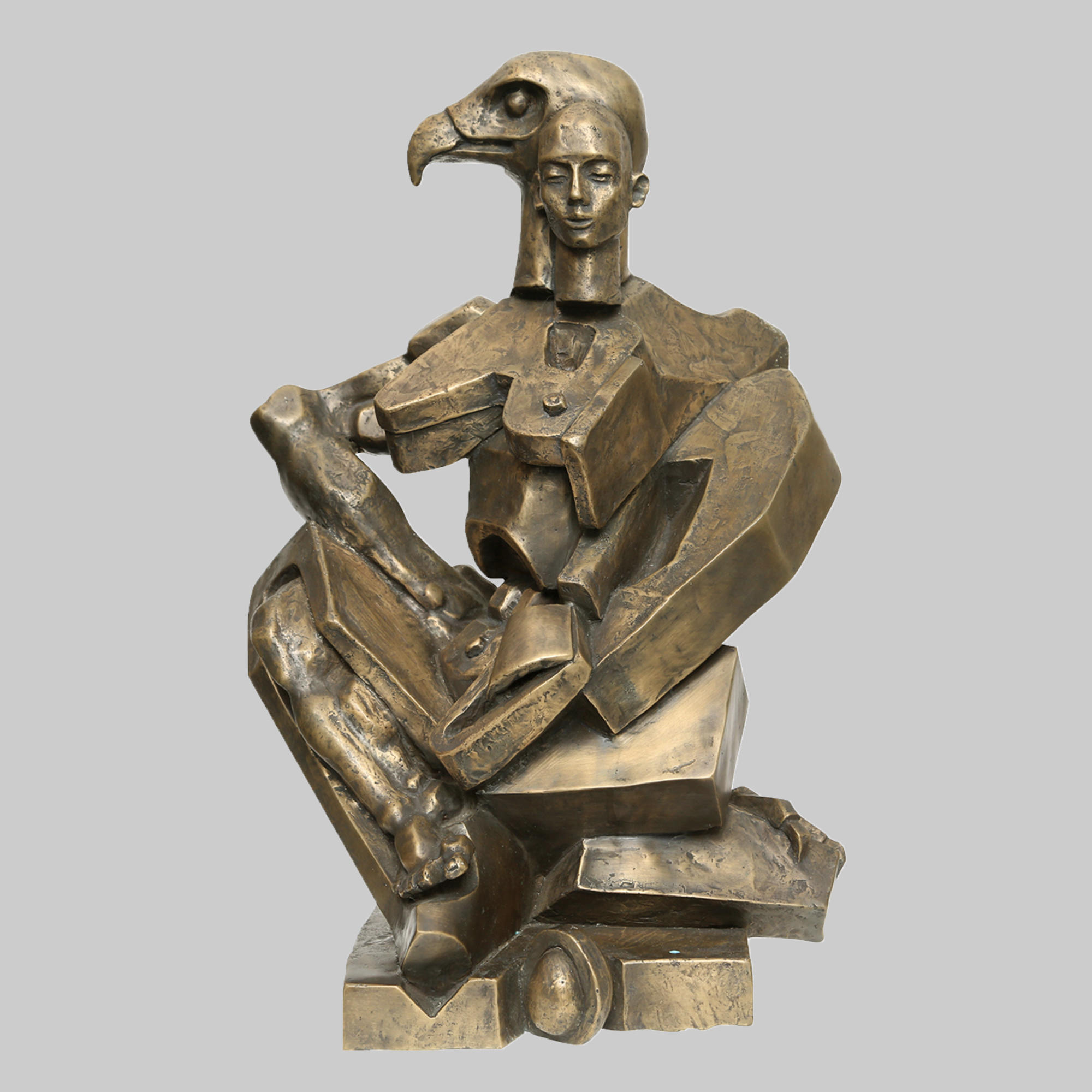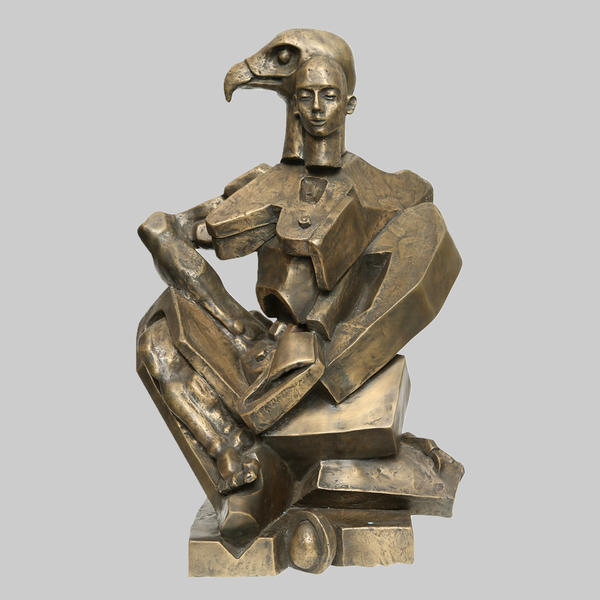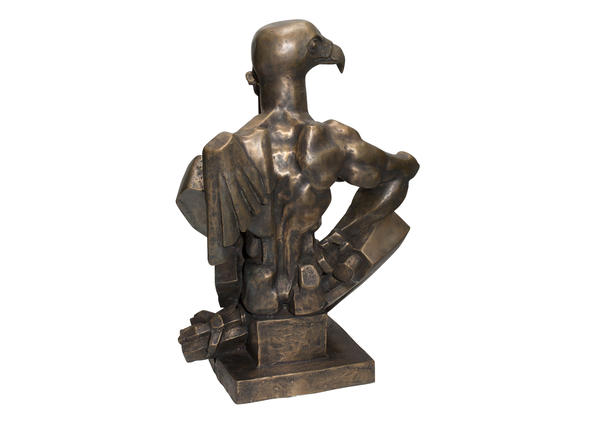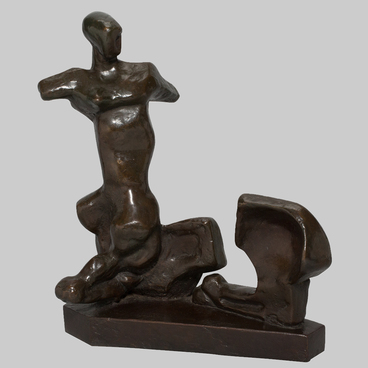Ernst Neizvestny got his art degrees from the Latvian Academy of Fine Arts in Riga and the Vasily Surikov Art Institute in Moscow. But his interests exceeded the scope of fine arts: he studied the history of ancient civilizations and philosophy when he attended lectures at the Philosophy Department of Moscow State University.
The artist’s thoughts about the substance of creative activity gave rise to his own idea of what sculpture should be about. In his opinion, it’s a dialogue of spirit and flesh, and the artist’s goal is not to show the outward beauty of the character but to convey the character’s internal being as a struggle and unity of numerous spiritual foundations. Ernst Neizvestny’s works include a lot of visionary figures combining human and animal nature. This cycle of works includes, among others, the Bird Boy sculpture made in the master’s late years.
The combination of the boy’s strong, expressive and anatomically accurate muscles with mechanical structure elements, acute angles and geometrical figures emphasize the dual and controversial nature of the fancy creature and creates a feeling of internal conflict for all the external calmness and static character.
Ernst Neizvestny did not consider the human body finished; in his perception, it undergoes endless metamorphosis. The dissection of the human body in his works is an attempt to show the infiniteness of body changes, not the desire to dismember it. The juxtaposition of body parts of a human and a bird (a bird’s head in addition to a human head, a wing, a bird’s foot) and mechanical parts refer the viewer to one of the artist’s principal philosophical concepts — the idea of dual human nature.
The artist’s thoughts about the substance of creative activity gave rise to his own idea of what sculpture should be about. In his opinion, it’s a dialogue of spirit and flesh, and the artist’s goal is not to show the outward beauty of the character but to convey the character’s internal being as a struggle and unity of numerous spiritual foundations. Ernst Neizvestny’s works include a lot of visionary figures combining human and animal nature. This cycle of works includes, among others, the Bird Boy sculpture made in the master’s late years.
The combination of the boy’s strong, expressive and anatomically accurate muscles with mechanical structure elements, acute angles and geometrical figures emphasize the dual and controversial nature of the fancy creature and creates a feeling of internal conflict for all the external calmness and static character.
Ernst Neizvestny did not consider the human body finished; in his perception, it undergoes endless metamorphosis. The dissection of the human body in his works is an attempt to show the infiniteness of body changes, not the desire to dismember it. The juxtaposition of body parts of a human and a bird (a bird’s head in addition to a human head, a wing, a bird’s foot) and mechanical parts refer the viewer to one of the artist’s principal philosophical concepts — the idea of dual human nature.




